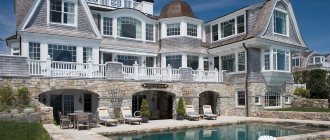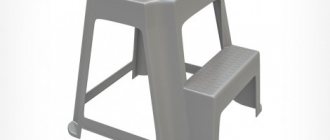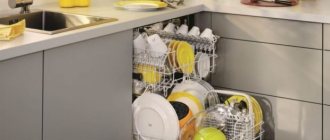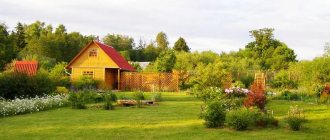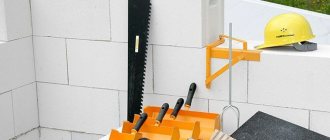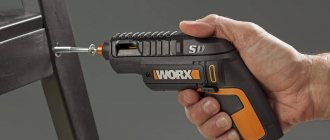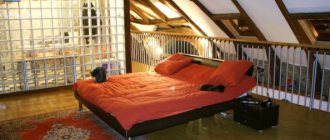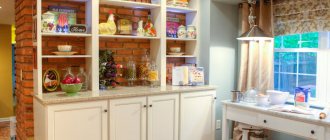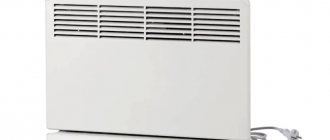The product in the form of a bar not only provides strength to the building, but also gives it a well-appointed appearance.
Factories that produce bricks focus on the individual needs of the consumer, so the building material has different characteristics and scope of application.
For this reason, choosing a product that contains mineral components can be difficult. In this article we will tell you which brick is better to choose for building a house and why.
No. 1. Types of bricks by material of manufacture
Various types of raw materials can be used to produce bricks. Manufacturing technology can also differ significantly, which explains the differences in the properties of different types of bricks. At the moment, the following types of bricks can be distinguished:
- ceramic;
- silicate;
- hyper-pressed;
- clinker;
- fireclay.
The first two are also divided into ordinary and facing depending on the appearance, as well as solid and hollow depending on the structure. Brick also differs in size, color, strength, frost resistance and other parameters.
Price
The price of building material depends on: the degree of eminence of the brand supplying products from the bar, the region of sale, the technical characteristics of the brick and the features of the technological process in its manufacture.
The cost of the product is (per piece):
- full-bodied (ordinary) – from 6 to 10 rubles;
- hollow - from 7 to 12 rubles;
- silicate (facial) – from 13 to 15 rubles;
- ceramic (porous/double) – from 17 to 19 rubles;
- fireclay (wedge) - from 20 rubles;
- clinker (facial) – from 30 rub.
Delivery services will increase the final price of the brick.
No. 2. Ceramic brick: pros, cons, production
Ceramic bricks are produced by firing clay in ovens at a temperature of about 1000 0C. Since red clay is often used, the brick gets a characteristic shade, which is why its second name is red brick . Clay varieties with a different shade may be used, or pigments may simply be added, and then the color of the product will be completely different.
High-quality clay with minimal admixture of sulfates and marl is used as raw material. After molding, the product is sent to the kiln for firing: a properly fired brick will have a red-brown tint and ring when struck . Unburned material has a mustard color and a dull sound when struck; it is afraid of moisture and does not retain heat. Burnt brick has a dark core and melted edges; it is not used in the construction of walls.
In the production of ceramic bricks, one of the following formation methods is used:
- plastic _ The initial clay mass has a moisture content of 15-21%, brick is produced by extrusion. Hollow bricks are made in vacuum installations. Plastic-formed brick is more resistant to frost and is excellent for building a house;
- semi-dry and dry . Clay has lower humidity (7-12% depending on the specifics of production), it is crushed into powder, from which raw brick is formed in presses without drying or with reduced drying, which is then sent for firing. The main advantage is the accuracy of the geometry.
Ceramic brick is used everywhere : when laying foundations, erecting load-bearing walls and partitions, cladding buildings, and for interior decoration. The main advantages include a variety of colors, sizes, shapes, ease of installation, long service life, environmental friendliness, good heat and sound insulation and reasonable price. The disadvantages are due to improper production, which may result in products with low durability and incorrect geometry, so trust only products from responsible manufacturers.
Which brick is better to build a house from: useful tips
To avoid purchasing low-quality products, you must first carefully examine their appearance for defects, and also read the relevant manufacturer’s documentation. In addition, following a number of the following recommendations will help you make the right choice:
- When purchasing building bricks, its surface should be free of large chips, cracks and irregularities. Products with chips deeper than 6 mm are unsuitable for use. If a brick is selected for cladding a building, then it must be completely free of any defects.
- Even minor limestone inclusions can subsequently lead to destruction of the material. They enter products through the clay used in production and when lime is insufficiently crushed during the production process, which causes moisture absorption. As a result, it increases in size and leads to deformation of the material.
- Ceramic bricks, when manufactured correctly, ring when struck. Otherwise, if, under similar exposure, the products have a dull sound, this indicates that they are underburned.
After finding out which brick is better to build a house from and what is important to pay attention to when purchasing, it becomes easier to make a choice in the direction of a suitable quality material and avoid purchasing low-grade material, which may have the same or similar cost, but noticeably worse technical indicators and a shorter lifespan. services.
Video:
No. 3. Sand-lime brick: pros and cons
Sand-lime brick is most widespread in the domestic space, and the main reason for its popularity is its low price . It is made from a mixture of quartz sand (90%), lime (about 10%) and additives. The color is white , but other shades can be achieved by adding coloring pigments. The brick is formed by dry pressing, and setting is achieved through the chemical reaction of slaking lime. The reaction is accelerated in autoclaves at elevated temperature and pressure.
Among the main advantages of sand-lime brick:
- low cost;
- environmental friendliness;
- excellent geometry and good aesthetic qualities. Facing sand-lime brick is widely used for finishing building facades;
- good strength and sound insulation;
- sufficient level of frost resistance.
Minuses:
- heavy weight and fragility, making the material difficult to handle;
- high level of thermal conductivity - you will need thorough insulation of the walls;
- low moisture resistance and the ability to degrade under the influence of moisture and chemicals, therefore the material is not at all suitable for the construction of foundations and plinths;
- instability to high temperatures - sand-lime brick is not used in the construction of stoves and chimneys;
- little variety. Sand-lime bricks are always rectangular blocks with precise straight lines, without roundness or complex elements.
If you don’t know which brick to choose for the construction of partitions and walls, and your budget is limited, then you can choose silicate brick. It still remains the most popular in private construction, but it is better not to use it for foundations.
Porous ceramics
This type of brick answers the question - which brick is better for building a house. Most suitable for rooms where it is necessary to maintain an optimal temperature level for humans. In all respects it exceeds the usual type of brick.
The main advantages are heat retention and lighter weight. In addition, it creates less pressure on the foundation of the house. It also has a higher level of volume. If the building is built from such bricks, then additional insulation is not required.
However, when you have become familiar with the types and characteristics of all types of bricks, you can choose the brick that suits you best, since building a house still requires such elements as labor and mortar, the amount of which is required differently for different types of bricks .
No. 4. Hyperpressed brick: production technology and features
Hyperpressed brick, if you look at it, is more like artificial stone. It is based on screenings of calcareous rocks, shell rock, dolomite, marble, the share of which reaches 90%. Cement is used to bind limestone, and iron oxides or other natural components are used to give the material color. The solvent is ordinary water. The mixture, homogeneous in structure, is sent under a press, and under the influence of high temperatures, the individual particles are fused together, which makes it possible to obtain the strongest material with precise geometry. After this, the brick is steamed and sent for rustication.
Advantages:
- high strength, durability, environmental friendliness;
- aesthetic appearance, variety of shapes, colors, sizes;
- frost resistance, brick can withstand up to 150 freezing/defrosting cycles;
- low moisture absorption.
Minuses:
- high price;
- heavy weight;
- high thermal conductivity.
Hyper-pressed brick is used exclusively for cladding facades and plinths ; it can be used for cladding fireplaces and for interior decorative finishing.
Voting: best brick manufacturer
Which brick manufacturer would you choose or recommend?
GKZ
37.50 % ( 6 )
LSR. Wall
0.00 % ( 0 )
NZKSM
0.00 % ( 0 )
SK
6.25 % ( 1 )
RKZ
0.00 % ( 0 )
MSTERA
25.00 % ( 4 )
Housing and communal services
6.25 % ( 1 )
KS-Ceramic
0.00 % ( 0 )
KKZ
6.25 % ( 1 )
LSZ
6.25 % ( 1 )
YAZSK
0.00 % ( 0 )
VKSM
6.25 % ( 1 )
MZSK
0.00 % ( 0 )
CHZSK
0.00 % ( 0 )
TCSM No. 2
6.25 % ( 1 )
Hyperpressed brick
0.00 % ( 0 )
RiK
0.00 % ( 0 )
No. 5. Fireclay refractory brick
Fireclay bricks are made from fireclay clay (about 70%), which is fired until plasticity is lost, then crushed and formed into a product. Essentially, this is the same ceramic brick, but due to the unique properties of the clay included in its composition, it is resistant to temperatures up to 1700 0C . Fireclay brick has a straw color, may have brown and reddish inclusions, and is produced in both regular shapes and wedge-shaped, angular and other shapes for ease of laying.
Despite the fact that ordinary ceramic bricks can easily withstand temperatures up to 800 0C, fireclay bricks are usually used to construct furnaces , since they accumulate and slowly release heat. It is used not only for the internal arrangement of stoves, but also for laying chimneys .
Material marking
It is quite difficult to judge the quality of brick blocks only by the raw materials from which they are made. It is necessary to evaluate building materials according to other parameters. One of them is strength.
All produced bricks are marked for strength. The marking consists of the letter M and several numbers. It must be indicated in the design of any structure. The brand is determined for any blocks - both silicate and ceramic. That is, it is the same for different types of material. For example, if solid and hollow bricks have the same strength, their markings will be identical. But the masonry will need to be done not with one, but with two bricks.
So, what is hidden behind the marking numbers? What is the difference between materials marked as M100, M125, M 200, etc.? Which brick to choose for the foundation and walls of the house?
It's actually quite simple. The numbers indicate the amount of load that the brick can withstand. For example, the M150 marking indicates that the maximum load for the material is 150 kg per 1 cm2.
To understand what strength you need, you should refer to building codes. Thus, they established that bricks of the M100 and M125 grades can be used to construct small buildings (2-3 floors), that is, it is suitable for the construction of private houses, but only load-bearing walls. And for the foundation you can use blocks marked M150 and M175.
Another criterion that must be taken into account is frost resistance. There is also a marking for this indicator. Frost resistance is considered as the ability of a brick to withstand a certain number of freezing and thawing cycles and not collapse. That is, no damage should occur after exposure to negative temperatures.
No. 6. Clinker brick
Clinker bricks are made from special refractory types of clay, including shale clay. During the production of the material, the temperature rises to 1100 0C, so individual particles are sintered and all voids are filled. The choice of raw materials is approached carefully, so the end result is a durable monolithic brick that is resistant to negative temperatures, environmentally friendly, heat resistant and highly durable. The variety of shapes, colors and surface types is enormous, which makes it possible to use clinker bricks for cladding facades, for paving garden paths and arranging stoves and chimneys. Among the disadvantages of the material are high cost and thermal conductivity.
Color spectrum
Currently, during the production of bricks, color additives are always added to the raw mixture. The only exception is masonry building bricks. Silicate blocks can be any color, from white to black.
Hyper-pressed brick can also be produced in any shade, since it is not fired, and tint is used to give it color. Ceramic blocks intended for cladding are usually one of the shades of red - from pink to dark brown. You don’t have to tint them, they look beautiful anyway. However, sometimes additives are still added, and then coloration occurs during the firing process due to the change in color of the additives under the influence of high temperature.
Thanks to the variety of types of bricks, including a wide range of colors, brick houses today can be equated to works of art.
If we talk about cladding, then its choice depends to a greater extent on the wishes of the developer, and to a lesser extent on the architectural features of nearby buildings. Recently, the facades of private houses are often faced with decorative blocks of different colors.
Cladding houses with bricks of two colors is also popular; it is closer to the classical style. When skillfully combined, two-color finishing allows you to create a unique facade design and turn an ordinary house into a beautiful cottage.
If your house has a brick facade and you want some changes, then try just painting it. At the same time, you don’t have to limit your flight of imagination - paint all the walls or individual areas (for example, sometimes it’s enough to paint the masonry around windows and doors or focus on other architectural elements, and the house will sparkle in a new way). It is worth noting that the function of paint is not only to create an aesthetic appearance. It also forms a protective layer on the masonry, preventing moisture, sunlight and other unfavorable factors from destroying the walls.
No. 7. Construction and facing bricks
Depending on the area of application, bricks are divided into:
- construction worker or ordinary;
- facing or front, facade.
Building brick , as the name suggests, is used for the construction of foundations, walls and partitions. After the construction of external walls, they must be protected and insulated. Such a brick may contain small chips, but it must have precise geometry. Ceramic and silicate bricks can be used for construction .
Facing bricks are distinguished by their precise geometry and interesting appearance; they are used for finishing facades and plinths, and can be used in interior decoration. Facing bricks can be ceramic and sand-lime bricks, as well as hyperpressed and clinker bricks. Appearance may vary significantly. It is customary to divide facing bricks into textured and shaped . The first has a standard shape, but has a decorative surface, the second has complex profile configurations and is used for arranging arches, windows and other non-standard architectural forms.
Surface type of facing brick:
- smooth matte or glossy;
- rusticated, when irregularities of a convex shape are created on the surface;
- corrugated with depressed type irregularities;
- broken when the surface is chipped or broken (this is often found in hyper-pressed bricks).
As for shades , each manufacturer offers its own set of colors, and there are also bricks with an interesting color transition. The range is represented by almost all colors of the spectrum: from light shades to almost black.
Rating of the best brick manufacturers
| Photo | Name | Rating | Price | |||
| TOP 6 manufacturers of ceramic bricks | ||||||
| #1 | GKZ | ⭐ 5 / 5 6 — votes | Find out the price | |||
| #2 | LSR. Wall | ⭐ 4.9 / 5 | Find out the price | |||
| #3 | NZKSM | ⭐ 4.85 / 5 | Find out the price | |||
| #4 | SK | ⭐ 4.75 / 5 1 - voice | Find out the price | |||
| #5 | RKZ | ⭐ 4.7 / 5 | Find out the price | |||
| #6 | MSTERA | ⭐ 4.6 / 5 4 - votes | Find out the price | |||
| TOP 3 manufacturers of facing bricks | ||||||
| #1 | Housing and communal services | ⭐ 4.95 / 5 1 - voice | Find out the price | |||
| #2 | KS-Ceramic | ⭐ 4.85 / 5 | Find out the price | |||
| #3 | KKZ | ⭐ 4.7 / 5 1 - voice | Find out the price | |||
| TOP 6 sand-lime brick manufacturers | ||||||
| #1 | LSZ | ⭐ 4.95 / 5 1 - voice | Find out the price | |||
| #2 | YAZSK | ⭐ 4.9 / 5 | Find out the price | |||
| #3 | VKSM | ⭐ 4.8 / 5 1 - voice | Find out the price | |||
| #4 | MZSK | ⭐ 4.75 / 5 | Find out the price | |||
| #5 | CHZSK | ⭐ 4.7 / 5 | Find out the price | |||
| #6 | TCSM No. 2 | ⭐ 4.6 / 5 1 - voice | Find out the price | |||
| TOP 3 manufacturers of hyperpressed bricks | ||||||
| #1 | Hyperpressed brick | ⭐ 4.95 / 5 | Find out the price | |||
| #2 | RiK | ⭐ 4.8 / 5 | Find out the price | |||
| #3 | BARRUM | ⭐ 4.65 / 5 | Find out the price | |||
Which brick manufacturer would you choose or recommend?
Take the survey
No. 8. The nature of the brick filling
Depending on the filling, the brick can be:
- full-bodied;
- hollow;
- porous - a separate type of brick.
Solid bricks have no holes or chambers. They are more durable, therefore they are used for the construction of foundations, walls, columns and other critical structures. This material has high bending strength and frost resistance, but has high thermal conductivity, so the walls definitely need insulation.
Hollow brick is distinguished by the presence of chambers or holes of round, rectangular or square shape; they can be through or closed on one side, horizontal or vertical. The hollowness of sand-lime brick can reach 30%, ceramic – up to 45%. Due to the voids, savings in raw materials are achieved, so such bricks cost less, and due to their low weight, it is more convenient to work with. But its main advantage is thermal insulation properties , since air is contained inside the voids. Typically, such bricks are used for the construction of interior partitions and cladding facades, rarely for laying lightweight external walls and never for arranging stoves and chimneys. It is worth remembering that this is a fairly fragile material, and the masonry mortar must be thick so as not to flow into the voids.
Separately, it is worth mentioning porous brick . These are blocks of fairly large sizes, the thermal conductivity of which is 0.14-0.26 W/m0C, and the larger the block, the lower its thermal conductivity. Such indicators bring brick closer to foam concrete, wood and even gas silicate, and record values are achieved due to special production technology . Porous bricks differ from ordinary ceramic bricks in that sawdust is added to the clay, which burns out during the firing process, forming voids, and these, in turn, contribute to thermal insulation. Depending on the desired thermal conductivity and strength grade, one or another amount of sawdust is added.
Working with porous bricks is not entirely convenient, but walls can be built very quickly. Moreover, such products have special channels into which vertical reinforcement can be poured, and this is an excellent solution for building warm houses in earthquake-prone areas. At first glance, it may seem that porous bricks are too expensive, but if you calculate the price per cubic meter, you will find that it is not much higher than for ordinary ceramic bricks.
What else to consider when choosing a brick?
When choosing construction products, you need to carefully study all the technical characteristics of the product indicated in its passport. External inspection of the bricks should be no less important. They should not have cracks or chips more than 6 mm deep.
If there are lime inclusions on the surface of the material, this means that the lime was poorly crushed at the production stage. When moisture gets on such a product, the lime will swell and may cause deformation of the bar.
The facing brick must not have any defects. A quality product can be recognized by its ringing sound. If it makes a dull sound upon impact, this indicates underburning of the material. If you take into account all these recommendations, a house made of building material will last a long time.
No. 9. Brick size
Once the color, type and nature of the filling have been determined, the next question arises - what size brick is needed . According to GOST 530-2007, a standard brick has dimensions of 250 * 120 * 65 mm, and all standard sizes are determined in relation to it:
- single brick - this is the same standard, it is the most versatile, it is used both for masonry and for cladding, it is convenient to work with, since it is completely compatible with human hands;
- one-and-a-half sizes 250*120*88 mm are used for laying massive structures and can significantly save time;
- double size 250*120*138 is rarely found in solid form, and hollow is used in lightweight masonry;
- narrow size 250*60*65 is used only for decorative purposes;
- thin 250*22*65 mm in size - this is, in fact, a tile, the scope of which is facing work;
- there is still a brick "Euro"(0.7 of standard thickness), modular (1.3 of standard thickness), incomplete brick and other exotic standard sizes, which are rarely used in construction.
Historically, the edges of a brick are called the bed (the largest working part of the product), the spoon part (the long side edge) and the butt (the smallest edge). Some manufacturers and stores operate with these very concepts, so it would be a good idea to remember them.
Knowing what kind of structure (or finishing) needs to be done, taking into account its size and the dimensions of the most suitable type of brick, you can easily calculate how much material is required, but it is still better to take it with a reserve.
Laying a brick facade. Practical advice
“Should I or should I not make a ventilation gap when facing walls with brick?” - This is perhaps one of the main questions that arise before starting work.
The answer to this question is given by the vapor permeability indicator of materials. A wall lined with brick is multi-layered, and the vapor permeability of the wall layers should increase from the inside out. The brick facade has a fairly low vapor permeability. And if we clad a house built of wood or aerated concrete, whose vapor permeability is higher, with brick, then the presence of a ventilation gap between the layers of the wall is mandatory. If the main load-bearing material of the wall is a ceramic block, which has the same vapor permeability as brick, then a ventilation gap is not necessary.
“How to calculate the required amount of brick?”
ContinentUser FORUMHOUSE
Everything is as simple as day: the size of a single brick is 250x120x65, it is also called conventional. consumption 51pcs/sq.m. taking into account mortar joints. (for masonry half a brick or 120 mm thick). If you use one-and-a-half bricks 250x120x88, then the consumption is 37 pcs./sq.m. If the brick is NF format (240x115x71) then you need 48 pcs/sq.m. If hand molded in WFD65 format (215x102x65) then 58 pcs/sq.m. Calculate the area of the facade of the house, throw out the area of windows and doors, add 10% for defects, damage and trimmings and move on.
“What cladding options are there?”
There are quite a lot of ways to lay bricks, here are the most common:
- Stepped cladding. All bricks are laid only with the long side, each subsequent row is shifted relative to the previous one by half or a quarter of the brick;
- Chain masonry. With this method, the spoon brick alternates with the bond brick.
- Savage. A rather complex type of masonry in which there is a deliberate asymmetry in the alternation of spoons and pokes. Despite the apparent chaos, this installation has a fairly rigid system.
- Bavarian masonry. Its essence is not in a special alternation of spoons and pokes, but in the distribution of shades of brick, when several tones neighboring in the palette are taken and laid with a certain alternation. This creates a special style. Masonry, which appeared as a necessity, is today a fairly cool design technique.
“What is the order of work?”
Ilya Efremov
When building walls made of ceramic blocks lined with bricks, it is first recommended to lay the bricks, starting from the corners. The first row is laid for waterproofing. The row must be laid out along the entire perimeter of the building, filling the seams completely. It is recommended to moisten the brick with water before laying it so that it does not actively absorb water from the mortar.
Blocks, like bricks, are also laid starting from the corners of the building, at a distance of 1 cm from the brick cladding. Each subsequent row of blocks is laid offset. Every two rows of blocks, the main wall and cladding are tied together using basalt, galvanized mesh or flexible ties.
It is recommended to lay no more than 2 rows of blocks or 6 rows of bricks per shift.
During work, you should constantly check the masonry using levels and plumb lines - the more often this is done, the better the result will be.
In the case of cladding an already built house from aerated concrete or wood, the most suitable material for connecting a brick facade with a load-bearing wall is stainless steel plates or flexible basalt-plastic connections.
No. 10. Brick grade by strength
When it comes to the construction of foundations and walls of buildings, the first place is taken by the brick's strength, which is determined by the brand. Strength means the ability of a material to withstand load, or in other words , the weight that 1 cm2 of brick can withstand without deforming . This parameter is reflected in the brand. For example, a brick that can withstand a load of 100 kg/cm2 is M100. Today bricks from M75 to M300 are produced:
- M75, M100 and M125 are suitable for erecting walls of small private houses up to 3 floors;
- M150 can be used to build walls of multi-story buildings and foundations of country houses;
- M200-M300 Suitable for constructing foundations of apartment buildings.
Strength data must be indicated in the technical data sheet of the product. It is difficult to determine the brand by eye , and if possible, then only approximately. So, for example, if a brick, when hit with a hammer, crumbles into particles the size of crushed stone, then this is a low-quality product. If it takes several blows to break the brick, then this is a medium-strength product. When you hit a brick of grade M150 or higher with a hammer, it will spark; at most, you will be able to knock off a few small pieces. To be sure to choose a high-quality, strong and durable brick, it is better to turn to products from reputable manufacturers who provide honest information about the product and produce bricks in accordance with all requirements. It is also worth noting that the final strength of the wall being built will also depend on the masonry mortar.
Price issue
Here again is a sore spot. An ordinary block of high-quality brand M100 is cheaper than 120 rubles. per piece (dimensions 380 x 250 x 219) I have not seen. That is, somewhere around 5500 per cubic meter with a wall thickness of 380 mm. Look on Yandex, maybe you will find it cheaper. Larger ones, 510 x 250 x 219, have a higher price tag, but will cost 5-10 percent less in terms of per cubic meter: about 5,000 - 5,100 rubles. per cubic meter of wall 510 mm thick.
The first row is made of solid brick. Next, ceramic blocks are laid using a protective mesh. (Photo: Millennium).
The first row is made of solid brick. Next, ceramic blocks are laid using a protective mesh. (Photo: Millennium).
Expensive, yes. It seems that it is 5-10 times more expensive than traditional brick. However, what you end up with according to the estimate must be taken into account specifically, since when using ceramic blocks:
- no additional insulation required;
- the mass of the structure is less, which means the foundation is cheaper;
- masonry in one layer is carried out quickly (by the way, the cost of the work is approximately the same as when laying traditional bricks, and the price tag has not increased in 10 years in this case).
Also, the solution, theoretically, is saved, since it is almost not used in vertical seams; there are mostly interlocking connections between the elements.
A house made of large-format ceramic blocks is ready for finishing
No. 11. Frost resistance of brick
Since the climate in most regions of the country is harsh, when choosing a brick it is worth taking into account the frost resistance indicator; it is designated as MP3 and is measured in cycles of sequential freezing and thawing, which do not in any way affect the basic properties of the material. For central Russia, it is better to take a brick with a frost resistance rating of at least 30-50 cycles ; for the harshest areas with a cold climate and changeable winter weather, there is a brick with a frost resistance of 100. If the winters in the region are mild, then you can stop at the minimum indicators.
These are my thoughts about bricks
If I had the necessary amount and the opportunity to permanently live outside the city, I would definitely build a brick house. If you ask me which #construction option I would choose, traditional brick, brick with a ventilated facade or ceramic blocks... Probably still a brick with a ventilated facade. This option seems to me optimal due to reliability (in terms of shock load), maintainability and financial investment.
Text: Grisha Cho
________________????
Subscribe to our channel HERE ???? read, we have a lot of interesting things:
Grisha Cho about frame houses
“Lazy” houses made of concrete: they don’t need to be insulated or covered - they’ll do just fine
Why 2-circuit boilers are almost never bought, and which boiler equipment is more profitable
